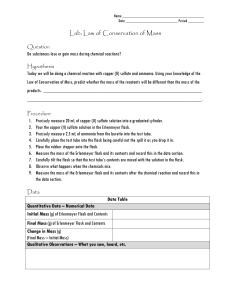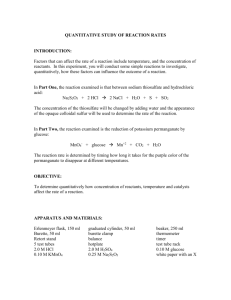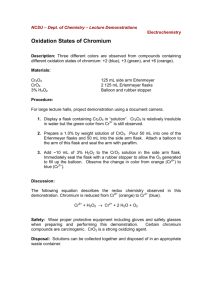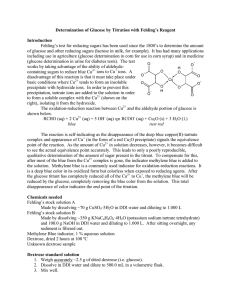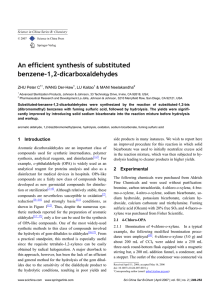EXPERIMENT 02 - BENZOYLATION OF GLUCOSE
advertisement
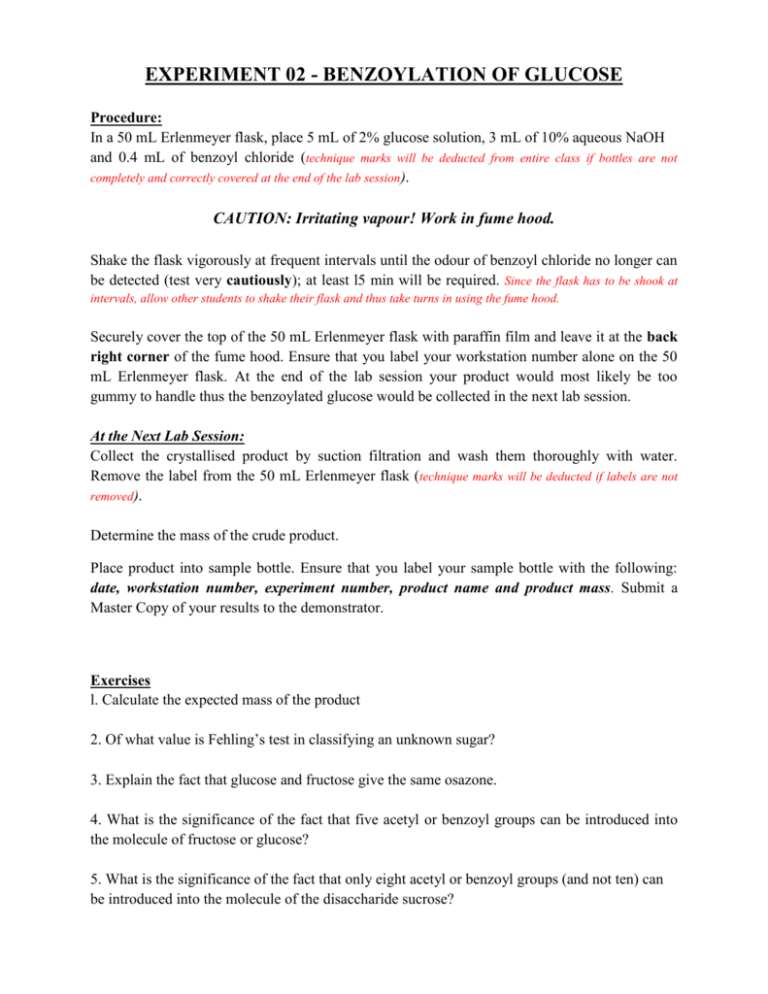
EXPERIMENT 02 - BENZOYLATION OF GLUCOSE Procedure: In a 50 mL Erlenmeyer flask, place 5 mL of 2% glucose solution, 3 mL of 10% aqueous NaOH and 0.4 mL of benzoyl chloride (technique marks will be deducted from entire class if bottles are not completely and correctly covered at the end of the lab session). CAUTION: Irritating vapour! Work in fume hood. Shake the flask vigorously at frequent intervals until the odour of benzoyl chloride no longer can be detected (test very cautiously); at least l5 min will be required. Since the flask has to be shook at intervals, allow other students to shake their flask and thus take turns in using the fume hood. Securely cover the top of the 50 mL Erlenmeyer flask with paraffin film and leave it at the back right corner of the fume hood. Ensure that you label your workstation number alone on the 50 mL Erlenmeyer flask. At the end of the lab session your product would most likely be too gummy to handle thus the benzoylated glucose would be collected in the next lab session. At the Next Lab Session: Collect the crystallised product by suction filtration and wash them thoroughly with water. Remove the label from the 50 mL Erlenmeyer flask (technique marks will be deducted if labels are not removed). Determine the mass of the crude product. Place product into sample bottle. Ensure that you label your sample bottle with the following: date, workstation number, experiment number, product name and product mass. Submit a Master Copy of your results to the demonstrator. Exercises l. Calculate the expected mass of the product 2. Of what value is Fehling’s test in classifying an unknown sugar? 3. Explain the fact that glucose and fructose give the same osazone. 4. What is the significance of the fact that five acetyl or benzoyl groups can be introduced into the molecule of fructose or glucose? 5. What is the significance of the fact that only eight acetyl or benzoyl groups (and not ten) can be introduced into the molecule of the disaccharide sucrose? 6. Give an accurate definition of the term carbohydrate. 7. What sugars are present in the solution after hydrolysis of sucrose? Will the sugars form an osazone with phenylhydrazine? 8. Why is the hydrolysis of sucrose sometimes referred to as the inversion of sucrose? What is an invert sugar? 9. What agents other than acids promote the hydrolysis of complex carbohydrates? 10. Fehling’s solution contains a known amount of copper per millilitre of solution. Suggest a method for determining the amount of glucose in a solution of known strength.


